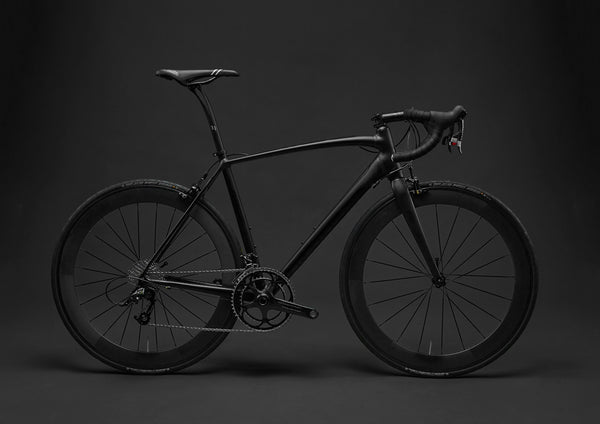Choosing the ideal tire width for your mountain bike will be easy once you determine what type of terrain you will be facing most frequently. Choosing the right tire size for your mountain bike is at least as important as choosing the right suspension travel. Both will have an important impact on what terrain you can ride and how much control you will feel.
Mountain bike tires differ in terms of rubber compound and tread, in addition to width. And finding the best tires for mountain biking will depend on which discipline you will be riding. First thing to establish is what type of mountain bike you are buying tires to fit. Are you riding an XC or cross-country bike? Is it a hardtail or full suspension? Is it a trail bike or an all-mountain bike? Or are you doing heavy duty descending on an enduro or downhill bike?
Each one of these disciplines will require slightly different things from the tires. As a general rule, the tire width requirements will increase the more your riding focuses on mountain descending. The region where you live will also impact the type of tire and width you will want to choose. Are you riding in dry, semi-arid conditions or will you be dealing with a lot of wet, loamy trails and exposed, slippery tree roots?
Mountain bike tire sizes guidelines
Though there can be a lot of overlap in terms of what tires you can choose for which discipline, in general you’ll find that for XC/cross-country riding you’ll want between 2.0” and 2.3” tires. For trail and all-mountain, you’ll be fitting between 2.3” and 2.5”. And for enduro/downhill riding, you’ll need to beef up to 2.4” to 2.8”.
Keep in mind when you are looking for the best tires for mountain biking, you need to stay within the limits of what your mountain bike frame and fork can accommodate. If you are riding an XC hardtail, for instance, there is a chance that the frame will limit you to 2.3” or perhaps 2.4” tires.

Knob shape and direction will have as much impact as rubber compound used. For XC mountain bike tires, you will likely be looking to find tires that are not super wide or have chunky tread. They will also as a result be lighter with a reduced level of puncture protection. The idea being, you are exchanging a certain amount of durability for lower weight and less rolling resistance. The knobs will be lower-profile and can even have a fairly slick center for reduced rolling resistance and slightly chunkier knobs on the sides for cornering grip.
If you are going to be doing more trail riding and all-mountain, you’ll naturally want to beef up on your tire, both in terms of width and durability. Since this style of mountain biking generally requires the greatest versatility from equipment, it’s important to get the balance right between puncture protection and agility. You’ll likely be going uphill as much as down, so making sure you have the right level of grip to weight ratio will be a question you’ll want to answer.
As is so often the case when choosing bike equipment, there is no one absolutely right answer. So much of it has to do with your personal priorities as well as trail conditions any given day. In general, you’ll want to get tires with more pronounced knobs for trail riding than you would if you were looking at pure XC riding. The rubber compounds will also change a little with additions like dual rubber compounds used for the sides to enhance grip. Protective layers to the casings will also be added to enhance puncture protection.
When riding enduro or downhill bikes, you just need to double-down on this reasoning when choosing the best tires for a mountain bike. Wider, tougher, grippier. Weight is almost of no interest since the intention is to be fast and in control on steep gnarly descents. That doesn’t mean your tire choice will be easy. Again you’ll need to pay attention to trail conditions and your own ride ambitions when choosing the best tire size for a mountain bike.
Tires to match the conditions
Even if you are riding the same trails every day, the conditions of the trails could change considerably from ride to ride. A long dry spell or heavy overnight rains can transform your home trails with unknown challenges. Picking the right tire for the conditions will save your rides and help you peg your fun meter.
When the conditions are muddy, then you’ll want a tire that has been designed to excel on wet, loamy trails. Wider tires will be essential with widely spaced knobs. They frequently will be specially shaped to clear mud before it builds up and destroys your traction. The rubber compound will also be specially adapted to offer exceptional grip in these challenging conditions.
Similarly for very rocky situations, you’ll need heavily knobbed tires that have extra layers of puncture resistance to prevent any ride-ruining punctures. The grippiness will be essential as well since total control means you’ll need to have confidence that you can stop as quickly as you need.
Dry, fast trails with lots of nice flowy berms won’t require overly-heavy duty tires. The tread will reflect the relative tameness of the trail and feature low-profile lugs that are more tightly packed. These will roll faster but still provide the required grip if you hit slightly sandier sections or need to power up a steep ridge.
Wheel sizes and mullets
If you already have a mountain bike, you will know its wheel size, or circumference. For adult bikes, you’ll generally find 26-inch (old school), 27.5-inch, or 29-inch wheels. In the early days of mountain biking, 26-inch was the norm, but you’ll be hard-pressed to find a non-child’s new mountain bike with 26-inch wheels for sale these days. Generally, you’ll be choosing between 27.5 and 29-inch wheels.

Again, there is no definite answer for which is better. Frequently, smaller riders will prefer the smaller wheels, but even that’s not always the case. The smaller sized wheels will usually be lighter and more responsive, so are not bad choices for XC riding. But the 29-inch wheels, especially modern carbon rimmed options, can be just as light and responsive, with the added benefit of big roll-over when facing large rocks and rooty trails.
Needless to say, when buying tires you need to make certain the tires match the circumference of the rims, and also fit comfortably in the width. Don’t buy mega wide tires if your rims recommend something narrower.
Also, keep in mind you don’t have to have the same width for the tire front and rear. Some riders prefer to run wider tires at the front for enhanced traction and control, and slightly narrower tires at the rear to save a little weight and ensure a slightly snappier acceleration. You can also choose to run tires of the same width, but different tread patterns front and rear for the same reason. Essentially, the possibilities are endless.
Mountain bike tire sizes and choosing the right one for your riding needs requires as much finesse as it does factoids. Once you understand what type of riding you want to do, and what trail conditions you’ll be facing, you’ll still want to take a close look at your skill and fitness level before deciding on the right pair of tires.
See our bike fit calculator - remember, that the most important thing to get right when buying a bike is the fit, not only the tires!



































































































































































































































































